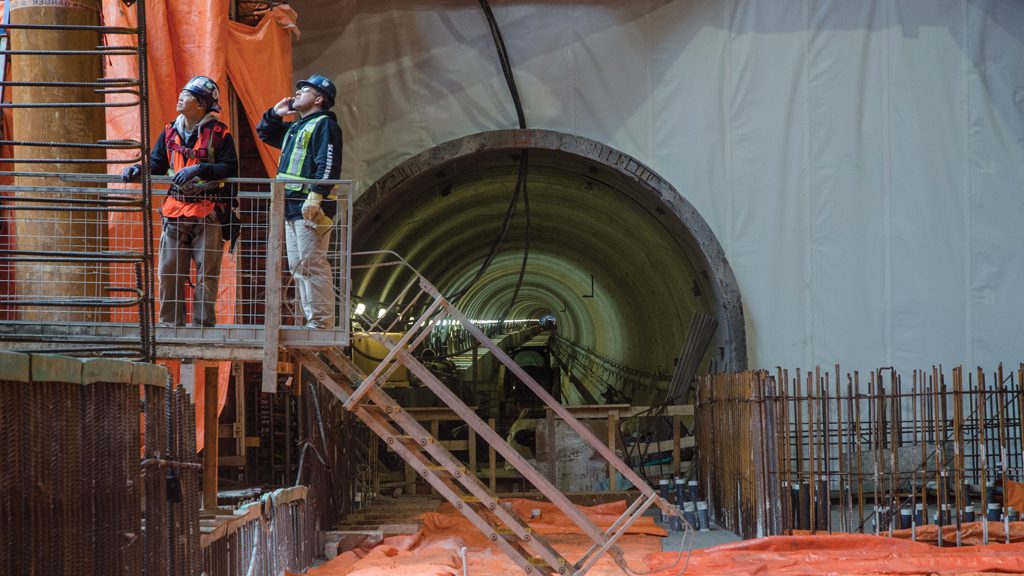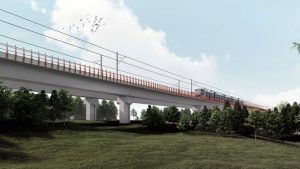Construction of new subways in the GTA is sure to be a major tool as the Ontario government looks to stimulate the economy post-pandemic but project planners should take care to avoid the excesses that have driven up the costs of recent projects.
That’s among the key insights found in a recent study of historical Toronto subway and LRT project costs commissioned by the Residential and Civil Construction Alliance of Ontario (RCCAO).
The report was written by transit journalist and researcher Steve Wickens and titled Station to Station: Why Subway-building Costs Have Soared in the Toronto Region. Wickens found subways cost far more now in real dollars than they did decades ago, even though the latest projects have had fewer stations per kilometre. Reasons given include extravagant station design, extreme tunnel depths, costs associated with corridor clearance and political meddling.
“There are going to be funding constraints because of COVID-19 and governments have to be wise about how they spend money, so this report says, here are some ways to save costs on delivering these multi-billion-dollar projects,” said RCCAO executive director Andy Manahan.
“I hope this research will jumpstart an urgent debate on how to improve all aspects of delivery for complex transit-infrastructure projects.”
The original Yonge subway line that opened in 1954 cost $88 million per kilometre in 2019 dollars. But the Eglinton Crosstown, now under construction, is set to cost $326 million per kilometre in 2019 dollars and the Ontario Line, slated to open at the end of this decade, has been costed at $703 million per kilometre.
It can save on risk-transfer costs in P3 contracts by taking on more risks associated with utility relocations,
— Andy Manahan
Residential and Civil Construction Alliance of Ontario
The Spadina extension had excessively glamorous stations, Manahan said, with multiple architects involved.
“Those stations had very high price tags compared with the Yonge, Bloor and Danforth stations, which were very utilitarian,” he remarked.
The study noted that Toronto once was able to keep costs low by relying on cut-and-cover tunnelling and, in less-dense suburban areas, at-grade corridors. But Toronto is now much denser than it used to be so much of the Ontario Line will have to go deep under the downtown core resulting in higher costs, Manahan said. Higher density also means higher land expropriation costs, he said.
The report is not intended to be critical of the Doug Ford government for the approach it is taking with the Ontario Line, said Manahan. Ford, who with his brother Rob was known to favour “subways, subways, subways,” has supported at-grade or above-grade sections for the Ontario Line where possible, to the chagrin of the residents of Riverdale, who protested at public meetings.
“That shows me he is willing to look at the evidence of people in the transit field,” said Manahan.
And the Ford government has shown it favours transit-oriented communities around stations such as Mimico and Woodbine, taking advantage of strong real estate values and generating revenues that can be pumped back into more transit projects, said Manahan.
The report also calls for planners to plan for and protect transit corridors.
“All GTA municipalities should be planning for and taking steps to ensure that potential lines in their areas can be built quickly and cost-effectively with a minimal need for utility relocations, which drive up risk and cost,” wrote Wickens.
The author also called for increased efforts to make public-private partnerships (P3s) work for transit projects. Infrastructure Ontario is aware it can save on risk-transfer costs in P3 contracts by taking on more risks associated with utility relocations, Manahan said — that was a costly lesson learned with the Eglinton Crosstown job, he noted.
“Metrolinx, before COVID-19 happened, recognized this was an important issue and agreed to take on more of that risk,” said Manahan.
The RCCAO executive said it’s important for the government to keep its foot on the pedal on transit spending to build the GTA regionally, ensure Toronto remains competitive and stimulate recovery.
“It is really important from the construction sector’s point of view, we view these projects as being stimulative as nature, so these are really important projects to keep the economy going,” said Manahan.
Follow the author on Twitter @DonWall_DCN.











Recent Comments
comments for this post are closed